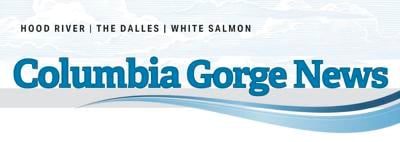The City of White Salmon is at an increasing risk of annihilation by wildfire:
• Warming planet with increasingly violent windstorms.
• A review of old photographs suggests there are presently more fuels (dead trees, dropped limbs, leaves, etc.) than at any time in the historical record.
• Fires on the steep slopes of the bluffs are extremely difficult to control.
Actions to reduce the fire risks are past due and our present leadership has no workable plan for significantly improving our chances.
The present activities of Washington’s Department of National Resources (DNR) are little better than “eyewash.” A recent conversation with the DNR project manager confirmed they are presently stymied by difficulties involved on working on steep slopes, leaving us with the idea that there is no present technical solution for fuel maintenance on the steep slopes.
But even if DNR could clear that hurdle, the present attempt at fuel reduction covers at most 5% of the bluff acreage that threatens our city. DNR also found it necessary to compromise on the recommended width of the “shaded fuel break” (for 60% grade, 260 feet is recommended; DNR reduced to 30-100 feet) as well as the recommended minimum distance between tree crowns (recommended 10 feet; DNR reduced to 5 feet).
Paul Hessburg, an expert with the United States Department of Agriculture (USDA) who has personal experience fighting fires in the Columbia Gorge, explained that the forest thinning required was achievable using well-known commercial logging techniques: an overhead cable-based system. For this option, the entire White Salmon bluff would be part of the “shaded fuel break” system surrounding the city.
The problem is that while professional loggers can do the job from a technical point of view, they are not able to surmount the political problem: Only about 25% of bluff acreage is owned by public entities. The other 75% is owned by about 75 individuals and other private entities. The only way to get fire mitigation accomplished on the bluffs is to get all of these people onto a single contract. Which is, of course, impossible without political leadership and tough decisions.
A few possibilities for actions the City of White Salmon could take:
• Require bluff owners within the city’s jurisdiction to clean up their land or agree to pay for the city to bring their property up to the standards required to reduce the fire risk.
• Put heavy pressure on the State of Washington to condemn all of the privately owned bluff properties threatening the city and manage the transformation of the landscape.
Either of those possibilities will likely require a lot of legal fees and may need some legislation. In any case, the transformation will require access to and disturbance of rim properties for setting up the “anchor points” for cable logging. The city also needs to solve that problem.
The base cost for the thinning work is estimated at well under $10 million. Presumably, most “rim” owners would be highly supportive of working with the city to assure the property access problem is not a “deal breaker.”
Whatever solution gets planned, maintenance will have to be addressed from the beginning. The maintenance problem, at a technical level, is at least as difficult as the initial thinning work. If goats are used, fencing systems will be needed. If people are used, access paths and tie-in points or railings are needed. Should controlled burns be considered? If designed into the “makeover” solution (additional access paths and water pipes), maybe this can be done at an acceptable risk.
There is no indication that our local political leadership has any plans to address this political problem. Until that changes, there is no hope that the citizens of White Salmon can do anything but prepare for the inevitable conflagration by “hardening” their properties as best they can.
References:
Side conversation with DNR White Salmon Fuel Break project manager Alison Martin at the City of White Salmon meeting to discuss the Bluff Stairs project on Nov. 14.
Phone conversations with Paul Hessburg
USDA Code 383 Shaded Fuel Breaks
Klickitat County Property database for determining rough property boundaries and landowners
Google maps to estimate bluff acreage
Hood River Museum and the Gorge Heritage Museum (Bingen)
•••
Wayne Thayer is a licensed professional engineer with a Master of Science in Engineering. He lives in White Salmon.
Editor’s Note: Columbia Gorge News reached out to White Salmon Mayor Marla Keethler for comment. Keethler shared an update dated Jan. 9, which was also distributed to the community, “that speaks to efforts the city is undertaking currently that intersect with improving wildfire preparedness across White Salmon.” A copy of the update is available at whitesalmonwa.gov/fire. “Regarding political leadership, it was the elected leadership of the city that spearheaded the work with our counterparts at Fire District 3 to undertake 18 months of outreach and collective work to bring a levy proposal to voters in 2023, asking to better fund fire response,” she said. “As you’ll see in the update, many of our water projects have a tie-in to addressing known areas of concern regarding pressure and flow needed in a fire situation, and securing those funds and prioritizing those efforts has been the result of political leadership. There is certainly more work to be done, and as evidenced by the resident submitting commentary on the topic, it is an issue that is top of mind for everyone.”






















Commented
Sorry, there are no recent results for popular commented articles.